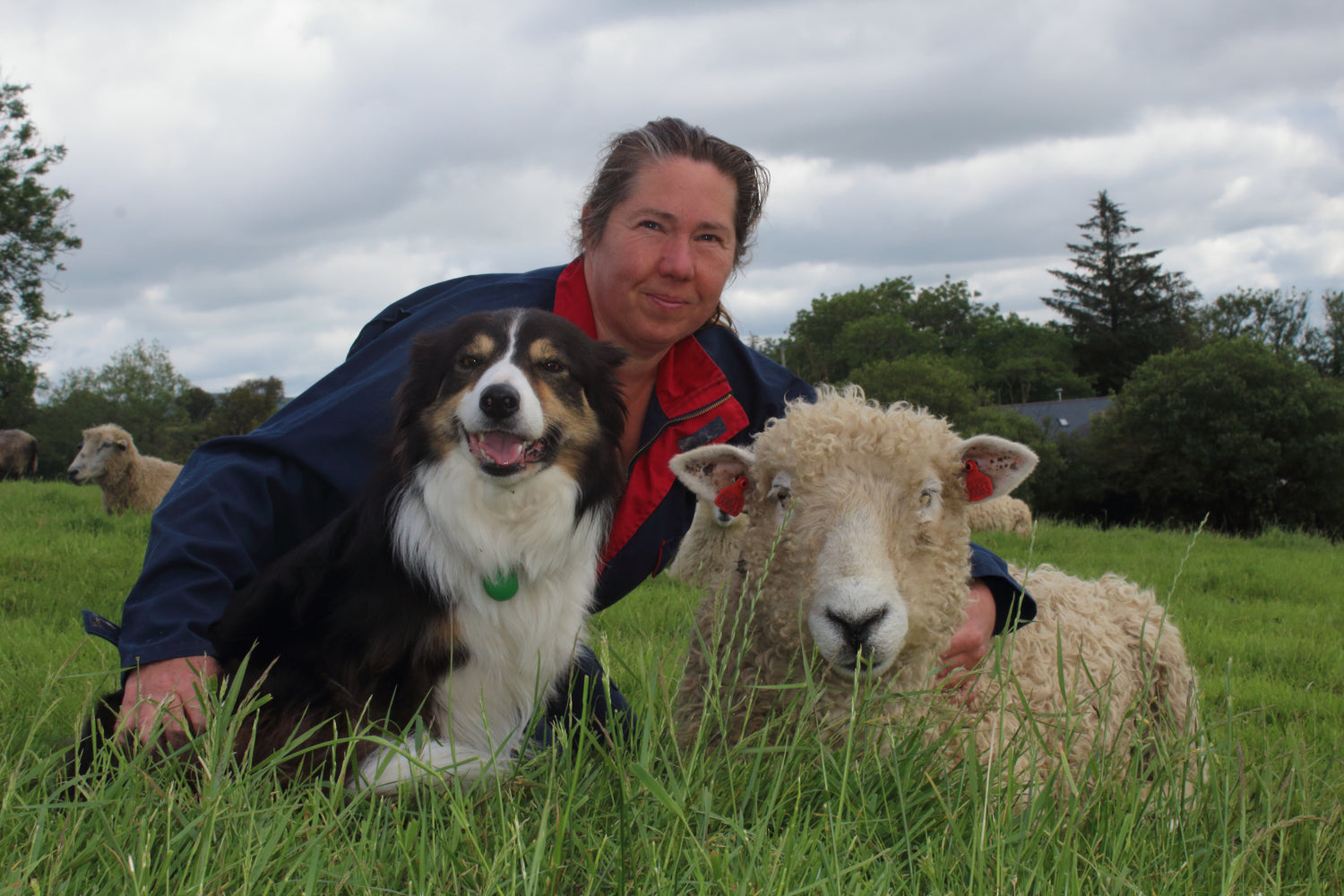Rare Breed Week: Devon & Cornwall Longwool

Join us as we speak to the breeders and crafters who are helping to keep our rare breeds going! First up; the Devon & Cornwall Longwool, writing and images by Jane Dobson.
Hello, wool enthusiasts! I'm Jane Dobson from Broadstone Rare Breeds based in Pembrokeshire, where I've dedicated over 14 years to farming Devon and Cornwall Longwools and Wensleydales. I believe in sustainable and holistic farming practices and committed to improving stock health and fleece quality.
Devon and Cornwall Longwools stole my heart at first sight, and that love remains unwavering to this day. Their calm character makes them an easy animal to handle. They are adaptable to the harsh weather that we are used to on our beautiful Welsh hill farm. Their fleece is simply exquisite—characterized by open locks with large curls cascading down their bodies. Observing these sheep in full wool is a wonderful sight. Personally, one of my greatest joys is shearing them by hand, this allows me to carefully assess the quality of each fleece and tailor its processing to suit my customers' needs.
Whilst the Devon and Cornwall Longwools are uncomplicated, the Wensleydales bring the diva personality that makes life interesting!
I acquired the Wensleydales after I learnt to spin; these sheep emanate elegance with their luxurious, soft, curly fleece that drapes gracefully over their torso. Watching them trot through the fields, their fleece swaying in rhythm is a visual enjoyment.
Both of these breeds are on the Rare Breed Survival Trust's watch list as 'At Risk', which was a significant factor in my decision to raise them. They fit seamlessly into my holistic farming system which also includes my passion for safeguarding native breeds.
While both breeds have lustre fleeces, they sit at different ends of the scale in terms of micron count. Wensleydales typically measure around 26-38 μm, whereas Devon and Cornwall Longwool falls between 32-40 μm. This distinction lends each fleece to a variety of uses and crafts.
Devon and Cornwall Longwool fleece, with its coarser staple, is ideal for crafting hard-wearing items because of its durability. Weaving this fibre into rugs is the most obvious choice for this fleece and it makes really strong weft and warp. Many of my customers use the fleece in this way. Devon and Cornwall longwool can be spun woollen , semi-worsted or worsted depending on the texture, strength, and appearance of the resulting yarn and the project you have in mind.
But Devon and Cornwall Longwool does have other uses and really this is only limited by the craft person’s imagination.
This fleece can be both needle and wet felted. It can add texture, strength and uniqueness to any project. When felting with Devon and Cornwall Longwool a bit more effort has to be put into the process. It’s not a fibre that felts easily, but it will felt to itself and other wool fibres. It’s perfect for making robust and durable felted items such as bags and slippers. You could use it to make simple ‘easy win’ items too for example dryer balls, brooches and coasters. Its curls will add fantastic texture to these creations. For an easier process, the crafter might want to combine it with another native breed fleece. This would be a useful addition if you are making felted Devon and Cornwall Longwool rugs.
You can find Broadstone Rare Breeds on Facebook and Instagram.
If you'd like to find out more about the Devon & Cornwall Longwool you can check out the Devon & Cornwall Longwool Association or the RBST.







